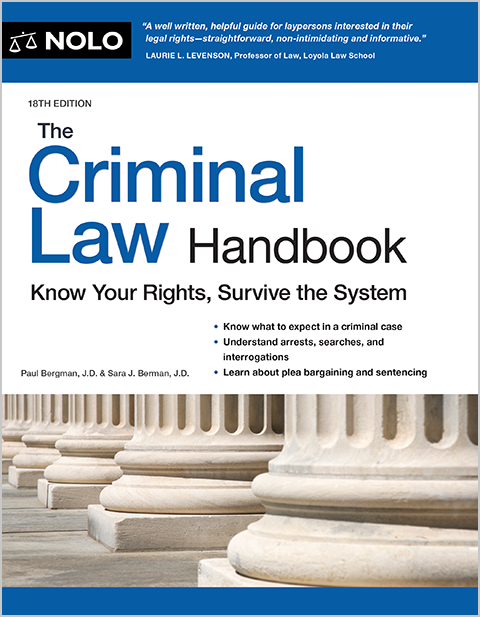If you have severe pain in your back and legs and you can't walk effectively or stand for prolonged periods of time, you have a good chance of qualifying for disability benefits.
Spinal stenosis (stuh-KNOW-suhs) is the medical term for a narrowing of the spaces in the spinal canal. Stenosis can be present in both the cervical (neck) and lumbar (lower back) regions of the spine. It often occurs as the result of another back problem, such as degenerative disc disease, osteoarthritis, herniated discs, or scoliosis. Stenosis can lead to compression (squeezing) of the spinal cord and nerves, which can cause muscle weakness, numbness, poor reflexes, and pain in the arms, hands, back, buttocks, or legs.
Depending on how severe these symptoms are, stenosis may make it difficult, if not impossible, to work full-time. When that happens, you may qualify for disability benefits from the Social Security Administration (SSA)—provided you have favorable medical documentation. Before you apply for benefits, you should know what records the agency looks for when making a finding of disability based on spinal stenosis.
- Is Spinal Stenosis a Permanent Disability?
- Is Spinal Stenosis in Social Security's Disability Blue Book?
- Getting Benefits for Stenosis Without Meeting a Listing
- Medical Evidence You'll Need to Get Disability for Spinal Stenosis
- VA Disability Ratings for Lumbar and Cervical Spinal Stenosis
- Applying for Social Security Disability Due to Spinal Stenosis
Is Spinal Stenosis a Permanent Disability?
Social Security awards SSDI or SSI benefits to people who aren't able to work on a regular basis due to a medical impairment that lasts for at least one year. This includes many people with stenosis who can't work because of pain in their back, neck, and legs that keep them from walking or standing long enough to do certain jobs. And because spinal stenosis is often the result of age-related wear and tear, many of the symptoms associated with the disorder aren't reversible. In the most severe cases, spinal fusion may be recommended, but surgery usually slows the progression of the condition rather than restoring any damaged nerves.
So if you're awarded benefits for stenosis, the SSA will assume you're permanently disabled and won't be rejoining the workforce full-time. However, the agency will still schedule you for continuing disability reviews every few years just to make sure that your condition hasn't improved to the point where you can earn wages at the level of substantial gainful activity. (For information about getting benefits for spinal issues that won't last forever, see our article on long-term disability for back problems.)
Is Spinal Stenosis in Social Security's Disability Blue Book?
Lumbar spinal stenosis that affects the cauda equina (a bundle of nerves at the end of your spine) is one of the back disorders recognized in Social Security's "Blue Book" of listed impairments, meaning that if your medical records are strong enough to meet certain requirements, you can get disability automatically without having to show that you can't work at all. To qualify for disability under listing 1.16, you must have evidence of the following:
- symptoms of neurological compromise, meaning non-radiating pain in one or both legs, non-radiating loss of feeling in one or both legs, or neurogenic claudication (pain or cramping caused by nerve compression)
- signs present during physical examination or testing of either muscle weakness and sensory changes (like decreased sensation, sensory nerve deficits, and incontinence) or decreased deep tendon reflexes in one or both legs
- imaging results or an operative (post-surgery) report showing stenosis in the cauda equina, and
- a documented need for an ambulatory device that requires the use of both hands (such as a walker or bilateral canes), or a device that requires the use of one hand (if you're unable to use the other hand for work-related activities).
Essentially, you'll need to have such extensive functional limitations as a result of your lumbar stenosis that you're unable to walk without assistance and you can't use both hands to perform work tasks, like typing. Similarly, if you have cervical stenosis, you may be able to meet listing 1.15 if you have documented nerve root compromise that affects your ability to use your hands.
Getting Benefits for Stenosis Without Meeting a Listing
You can still qualify for disability benefits even if you don't meet the listing requirements if you have a residual functional capacity (RFC) that rules out all full-time jobs. Your RFC is a set of restrictions on what you can do at work despite your symptoms. The more severe your stenosis is, the more limitations you'll have in your RFC. For example, somebody with moderate cervical stenosis may not be able to do jobs that require lifting more than 20 pounds, while somebody with severe stenosis may be restricted from lifting even 10 pounds.
Other common restrictions in RFCs for back problems include walking and standing for no longer than two hours total in an eight-hour workday, prohibitions against jobs that involve bending, stooping, kneeling, or crouching, and only occasional overhead reaching. If you can't do your past work because of the limitations in your current RFC, Social Security will then need to determine whether any other jobs exist that you can still perform with your RFC.
For most disability applicants under the age of 50, this typically means that your RFC keeps you from doing even the simplest sit-down jobs on a regular basis. Claimants 50 years of age or older—the age category most likely to have spinal stenosis—may have an easier time getting benefits thanks to a special set of rules known as the "medical-vocational grid." Under the grid rules, if you can't do your past jobs and you haven't acquired any transferable skills that you can use in a different line of work, the SSA will award you disability benefits.
Medical Evidence You'll Need to Get Disability for Spinal Stenosis
Strong medical records are the foundation of a successful disability claim. When you apply for benefits, the SSA contacts the medical providers you've listed on the application form to obtain the doctors' notes and clinical findings from your visits. Ideally, your records should include most, if not all, of the following information:
- objective imaging, such as X-rays or MRIs, establishing that you have spinal stenosis and showing the extent of the joint space narrowing
- lab work or other diagnostic tests (like a nerve conduction study showing that you have nerve latency)
- physical examinations that show signs of diminished reflexes, sensation, strength, muscle atrophy, and reduced range of motion
- a list of the medications you've taken, including any side effects
- hospital admission and discharge records for any surgical procedures or steroid injections
- physical therapy records, and
- your doctor's opinion on what your functional limitations are (for example, no standing or walking for more than 30 minutes at a time).
Social Security values the opinions of doctors who've regularly treated you for your spinal stenosis, as they can provide helpful insight into your condition. Busy physicians and neurologists don't always have time to fill out more paperwork, however, so focusing your doctor's attention on your disability claim can be a challenge. If your doctor seems reluctant to write an opinion, you may want to check out our article on getting your doctor's help for useful tips.
VA Disability Ratings for Lumbar and Cervical Spinal Stenosis
Veterans who have service-connected spinal stenosis may qualify for disability compensation from the VA. Unlike the SSA, the VA assigns disability ratings based on how limiting your disabling condition is, instead of just determining that you're either disabled or you're not. These ratings are set forth in the Schedule for Rating Disabilities, which assigns a disability percentage according to diagnostic code and degree of limitation.
Both lumbar and cervical spinal stenosis are classified under diagnostic code 5238 and evaluated under the General Rating Formula for Diseases and Injuries of the Spine. The available disability ratings for spinal stenosis range are 10%, 20%, 30%, 40%, 50%, and 100%. Your rating determines in large part how much you'll receive in disability compensation, so make sure your claims file contains all medical records the VA needs to rate your stenosis correctly.
Applying for Social Security Disability Due to Spinal Stenosis
Filing for Social Security benefits is a fairly straightforward process. Many people choose to apply online, but you can also speak with a representative at 800-772-1213 (TTY 325-0778) from 8:00 a.m. to 7 p.m., Monday through Friday, or go in person to your local Social Security field office.
You'll need to provide detailed information when completing the application, such as the contact information and treatment dates for each medical provider you've seen, the dates and locations of any medical testing you've completed, and the names, addresses, and employment dates for each job you've held in the last five years. Mention how your back pain affects both your ability to work and your life outside of work. If you have a mental impairment in addition to stenosis, such as depression, be sure to include symptoms and records of the mental impairment as well.
While you don't need an attorney at any step of the disability determination process, it's generally a smart idea to have one. If you want help with your application—or you've received a denial and want to increase your chances of winning an appeal—consider contacting an experienced disability attorney. Disability lawyers work on contingency, meaning they don't get paid unless (and until) you win, so there's little risk in hiring one early in the process.
- Is Spinal Stenosis a Permanent Disability?
- Is Spinal Stenosis in Social Security’s Disability Blue Book?
- Getting Benefits for Stenosis Without Meeting a Listing
- Medical Evidence You’ll Need to Get Disability for Spinal Stenosis
- VA Disability Ratings for Lumbar and Cervical Spinal Stenosis
- Applying for Social Security Disability Due to Spinal Stenosis


